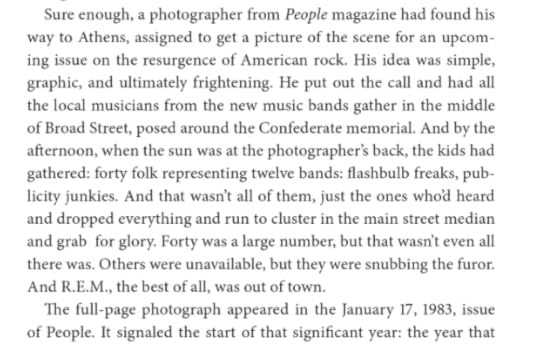tidbits, fragments, and ephemera 38: the reboot
Released fifty years ago, Keep on Smilin’ was the band Wet Willie’s third album, and its title song became their biggest hit. Led by Jimmy Hall, the group was formed in the late 1960s in Mobile, Alabama and later moved to Macon, Georgia to sign with Capricorn Records. They were well-known as an opening act for the Allman Brothers Band. The album charted as high as number 41, and the single just did break the top-10.
Hustler‘s Larry Flynt is shot in Lawrenceville, Georgia, 1978Larry Flynt was a controversial figure in the 1970s for publishing the pornographic magazine Hustler, which was generally more explicit in its depictions and imagery. As a result of his work, Flynt was facing criminal charges in Gwinnett County, Georgia, and when he went down to face those charges, he was shot with a .44 caliber rifle in broad daylight. The gunshot did not kill Flynt, nor did it stop him from publishing his magazine, but it did cripple him permanently. Though rumors circulated that there was a government conspiracy to kill Larry Flynt, it was determined that the killer had committed the act because he was angry about an interracial sex layout in Hustler. In 2013, Atlanta Magazine published a look-back piece on the incident, and the true crime book Blood in the Soil came out in 2016.
People magazine discovers the Athens alternative music scene, 1983an excerpt from page 191 in the 2016 book Party out of Bounds by Rodger Lyle Brown:
South Carolina defeats Notre Dame 36–32, October 1984Called “A Golden Afternoon” by the website GamecocksScoop.com, this college football victory was notable within a great season for the team that year. South Carolina was ranked number 11, and the game was played at Notre Dame’s stadium. The Fighting Irish were ahead at halftime, then had an even greater lead at the end of the third quarter. But the Gamecocks fought back and came out on top, giving them a 6–0 record at that point in the season. Sports Illustrated remarked in its coverage that it was the best start for a South Carolina team ever, and they also referred to Notre Dame as the “Dying Irish.” Though South Carolina had its best season ever (up to that point), their winning ways were stymied by a late-season loss to Navy followed by a loss in the Gator Bowl. Their season ended with a 10–2 record. South Carolina later joined the Southeastern Conference (SEC), in 1992.
“The murders of 1994: Lessons from New Orleans’ deadliest year” from nola.com, July 2016In 1994, there were 424 people murdered in New Orleans, which was then the highest number ever recorded. A May 1994 report from The New York Times explained that there had already been almost 200 murders and that there had even been six murders in one day. Modern accounts of the period note that the city’s police force had severe problems with corruption, which may not have caused the problems, but it certainly did not help. Following this violent episode in the city’s history, significant efforts were made to reduce the murder rate and curb corruption.
“The Harvest: Integrating Mississippi’s Schools” on PBS’s American Experience, September 2023excerpt: “After the 1954 Supreme Court’s landmark Brown v. Board of Education decision ruled that racial segregation in public schools was unconstitutional, little more than token efforts were made to desegregate Southern schools. That changed dramatically on Oct. 29, 1969, when the high court ordered Mississippi schools to fully — and immediately — desegregate. As a result, a group of children, including six-year-old [Doug] Blackmon, entered school in the fall of 1970 as part of the first class of Black and white students who would attend all 12 grades together in Leland, Mississippi.” The small town of Leland is located between Greenville and Indianola, in the western part of the state. The central figure in this documentary, Doug Blackmon, is today a Pulitzer Prize-winning historian and journalist.
Read more tidbits, fragments & ephemera



